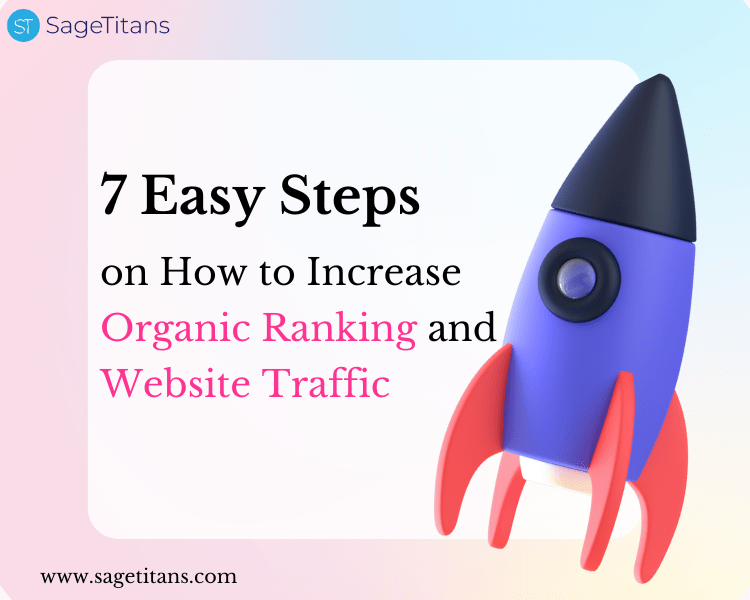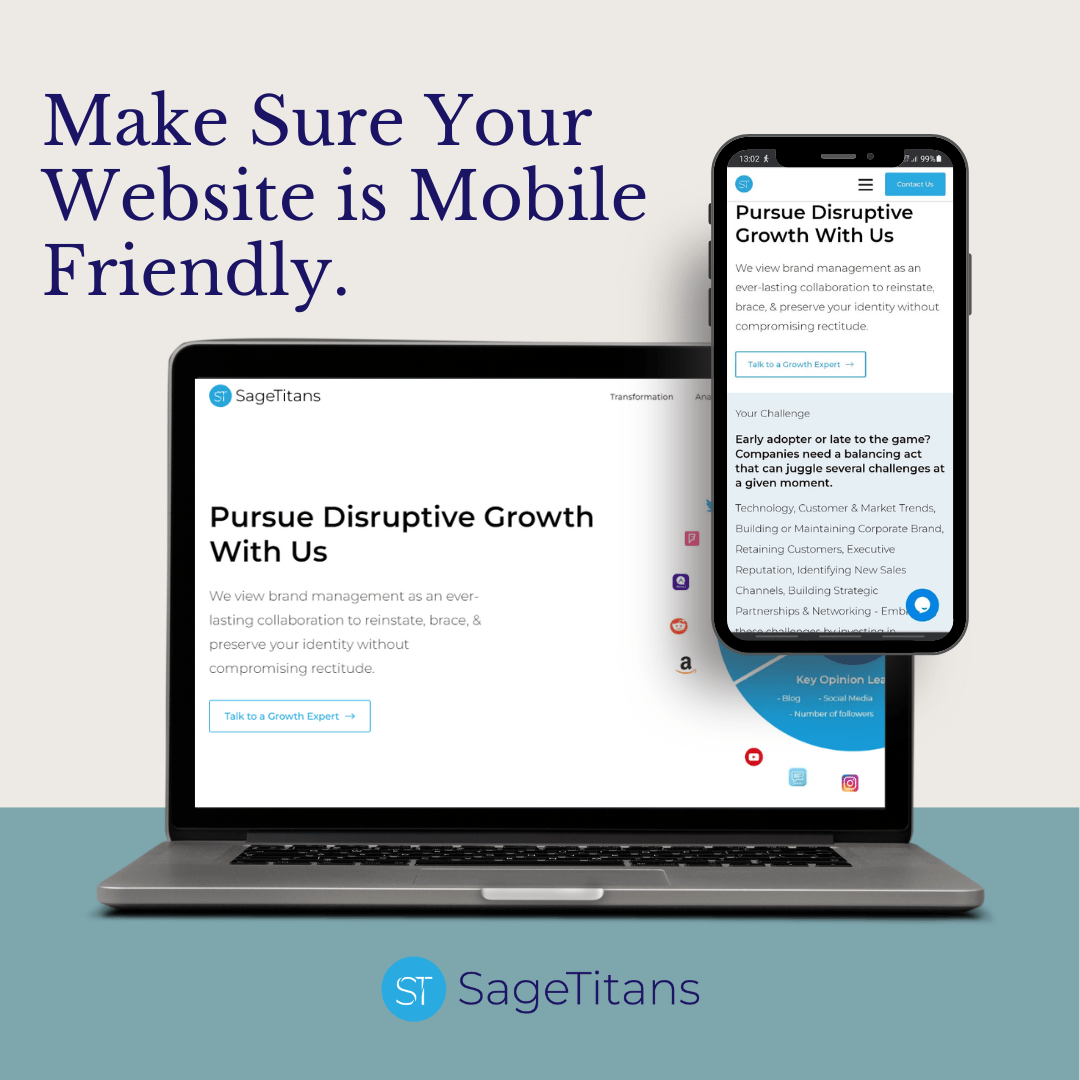
How to Increase Organic Ranking & Website Traffic in 7 Easy Steps
You’ve probably heard that one of the important key factors to online success is organic traffic. And you’re most likely wondering how you can get more of it.
Increasing website organic traffic is surprisingly simple if you know where to look and how to do it! In this guide, we will illustrate how to improve your organic rankings and drive more traffic to your website. Let’s get started.
What is Organic Ranking On Google?
Organic ranking refers to the position of a website or webpage in the unpaid, “organic” search results of a search engine. When a user searches on a search engine, the search engine uses an algorithm to determine the relevance and authority of the websites and web pages that match the search query. The websites and webpages that the search engine determines to be the most relevant and authoritative are then ranked higher in the search results. Organic ranking is different from paid ranking, where websites are ranked based on the amount of money spent on paid advertising.
How to increase organic traffic to your website?
Step 1: Create great content
The best way to increase your website organic traffic is to provide high-quality content to users. Concentrate on producing useful and engaging content that people will want to share with others. The best way to generate content is to create a blog on your website and use it to share useful information with your target audience.
5 smarter ways to create great content:
- Conduct keyword research: Determine which keywords and phrases your target audience is using and create content that is optimized for those terms.
- Create high-quality, informative blog posts: Provide valuable information in content that addresses the needs and queries of your target audience.
- Optimize your content for on-page SEO: This includes implementing your keywords into the meta title, meta description, and body of your content.
- Create a consistent publishing schedule: Regularly publishing new content will keep your website fresh and returning visitors.
- Promote your content through social media and other channels: Share your content on social media and other platforms to drive traffic to your website.

Step 2: Optimize Existing Blog Posts
In addition to creating new content, You should spend time optimizing your existing blog posts. Use search data from Google Search Console and Google Analytics to determine which blog posts are generating the most traffic, and then use this information to improve your existing posts. Make your posts longer and use headings and paragraph breaks to improve readability. Use SEO tools to optimize each post by including targeted keywords and internal linking to other relevant pages on your website.
5 smarter ways to optimize existing blog posts:
- Update your content: Make sure that your blog post is up-to-date with the latest information and trends in your industry.
- Optimize your post’s title and meta description: Conduct keyword research to determine the most relevant keywords for your blog post. Include those keywords in the post’s meta title and description.
- Use internal linking: Link to other relevant blog posts within your website, which will help visitors discover other content they might be interested in and also it helps with website navigation.
- Add images and videos: Visual content can help break up text and make your post more engaging.
- Optimize for readability: Make your post easier to read and more engaging by using headings, bullet points, and other formatting techniques. This allows visitors to quickly find the information they seek and it also helps in improving the user experience.
Step 3: Build the Backlinks
Backlinks are incoming links from other websites to your website. When done correctly, they can help to boost your organic ranking and improve your search results ranking. Guest posting, creating infographics, and writing product reviews or service-focused problem solution content on other websites are all simple ways to build backlinks to your website. To help boost your website organic traffic, make sure any backlinks you create are relevant to your industry and have good content quality. Irrelevant backlinks may raise your toxic score, and you may need to perform a backlinks audit in near future to create a disavow file to get rid of them.
5 smarter ways to build high-quality backlinks:
- Guest blogging: Reach out to other websites in your industry and offer to write a guest blog post. This can help you gain backlinks as well as exposure to a newer audience.
- Broken link building: Find broken links on other websites in your industry and reach out to the website owner to let them know. Offer to provide a replacement link that points to your website.
- Create valuable resources: Create valuable resources such as infographics, ebooks, or whitepapers that other websites in your industry may want to link to.
- Participate in online communities: Participate in online communities, such as forums and social media groups, related to your industry. By providing valuable insights and contributing to discussions, you may be able to earn backlinks.
- Reach out to influencers: Identify influencers in your industry and reach out to them. If they find your content valuable, they may be willing to share it with their audience and link back to your website.
Step 4: Make Sure Your Website is Mobile Friendly
Because the web is becoming more mobile than ever, optimizing your website for mobile devices is critically important. Google now prefers websites that look great on mobile devices over those that are only available on desktop computers. If your website isn’t mobile-friendly, it will rank lower in search results than sites that provide a better mobile user experience.
5 smarter ways to optimize website user experience for increasing organic traffic:
- Make sure your website is mobile-friendly: As more people now access the internet via mobile devices, a mobile-friendly website is essential to provide a good user experience.
- Improve website load time: Slow load time can degrade the user experience and increase bounce rates. Reduce web page load time by optimizing your website’s images, code, and other elements.
- Make it easy to navigate: Make sure your website’s navigation is simple. This will help visitors to find the information quickly and easily that they are looking for.
- Optimize for accessibility: Make your website accessible to users and search engines by adding alt-text for images, captioning videos, and providing audio transcripts.
- Use clear and descriptive URLs: Use simple and descriptive URLs that closely portray the page’s content. This will help visitors to understand where they are on your website and search engines understand the page’s content.

Step 5: Create a Social Media Presence
Social media has become an essential component of a successful search engine optimization (SEO) strategy. The more social signals you have pointing to your site (likes, shares, etc.), the higher your search ranking will be. Social media can also help you in promoting your content and increase traffic to your website.
5 smarter ways to increase social media presence for organic SEO growth:
- Create valuable content: Share valuable, informative, and engaging content that resonates with your target audience on your social media platforms.
- Use relevant hashtags: Use relevant hashtags on your social media posts to increase visibility and reach a wider audience.
- Engage with your followers: Respond to comments and messages, and start conversations with your followers. This will help you build stronger relationships with your audience.
- Collaborate with other influencers or brands: Collaborating with other influencers or brands in your industry can help you reach a wider audience and gain exposure to new followers.
- Use social media advertising: Investing in social media advertising can help you reach a wider audience and increase your social media presence. You can target specific demographics and interests to reach the right audience.
Step 6: On-Page SEO Optimization
Optimize your website for all major on-page elements such as title tags, meta descriptions, URLs, image alt text, H1 tags, and so on. Check each On page element individually with AI-powered SEO tools such as SEMrush, Ubersuggest, and Ahrefs.
5 smarter ways to do on-page SEO for organic SEO growth:
- Optimize your title tags and meta descriptions: Ensure that your title tags and meta descriptions accurately reflect the content of your pages and include relevant keywords.
- Use header tags appropriately: Use H1 tags for the title of the page and H2 and H3 tags for subheadings. This will help search engines understand the structure of your content.
- Optimize images: Use descriptive file names and alt tags for images to help search engines understand the content of your images.
- Use internal linking: Link to other relevant pages within your website to help search engines understand the relationships between your pages.
- Optimize your website’s URL structure: Use clear, descriptive URLs that accurately reflect the content of the page. This will make it easier for search engines to understand the content of your pages.
Step 7: Local Citations & Reviews
If you own a local business, such as a restaurant or service provider, you will need local citations to rank higher in local search results. Make sure that people leave reviews about your business on your website and all major reviews publishing websites, as this will help you rank higher in Google search results.
5 smarter ways to manage citations and reviews for organic SEO growth:
- Monitor your citations: Keep track of where your business is listed online and make sure that the information is accurate and consistent.
- Encourage customer reviews: Ask satisfied customers to leave reviews on popular review sites such as Google and Yelp.
- Respond to reviews: Respond to both positive and negative reviews promptly. This will show that you value customer feedback and care about customer satisfaction.
- Optimize your Google My Business listing: Make sure that your Google My Business listing is complete and accurate. This can help your business appear in the local pack results in search engine results pages (SERPs)
- Use structured data: Use structured data to provide search engines with additional information about your business, such as your address, phone number, and business hours. This can help your business appear in the local pack results in SERPs
Conclusion:
These are the top seven SEO tactics you can use to optimize your website for organic search engine rankings. Implement each of these steps one at a time to see an improvement in your overall search rankings and begin receiving more traffic from search engines to your website. Contact us if you have any questions or need assistance with your organic SEO efforts. Our expert team will provide you with a free SEO audit & growth plan. Contact Sage Titans Team now!
